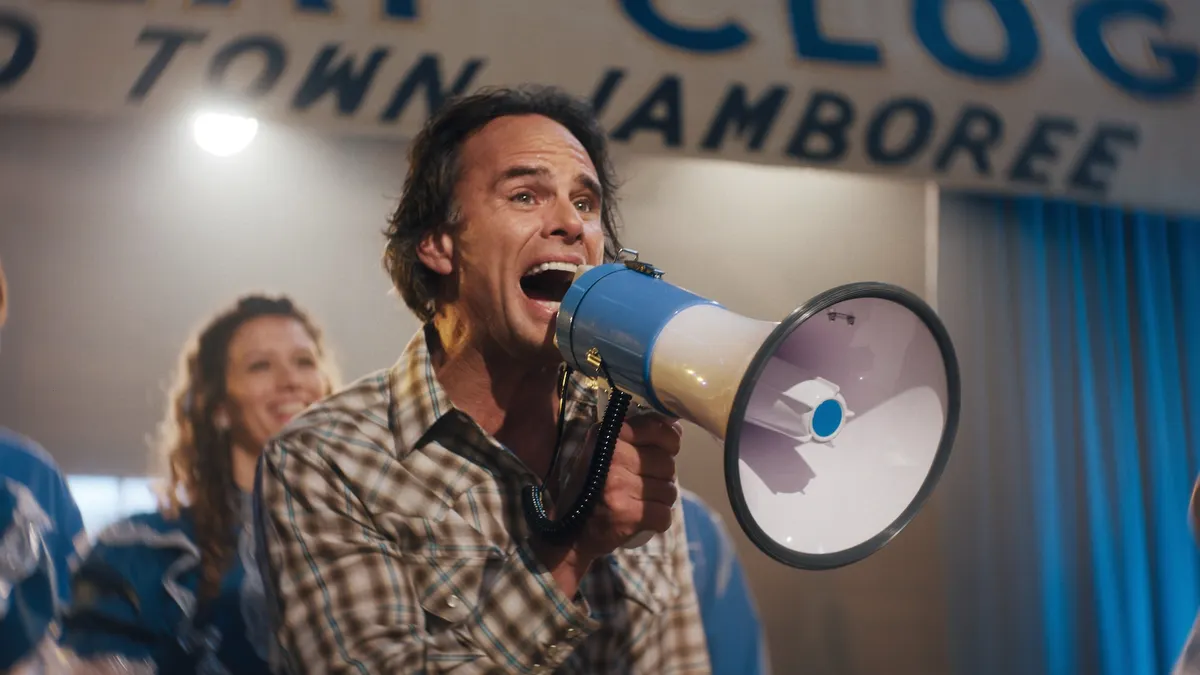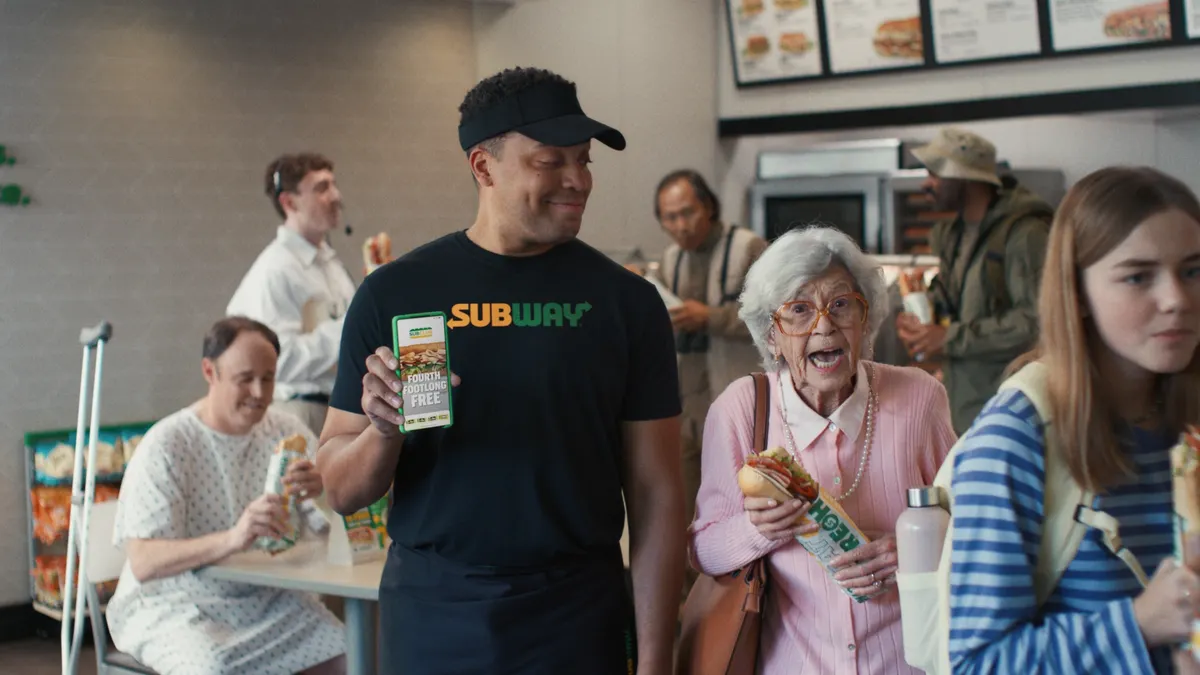Seven years ago, while hurriedly searching for holiday gifts in London's Westfield Shopping Centre, consumers looked up and noticed an Advent calendar. A really, really big Advent calendar.
Digitally projected on the walls inside the mall, the calendar’s little windows opened by themselves, with messages next to each date in the season, such as "7 continents, 18 billion kids, only one Santa," and "4 mulled wines later, Granny does the funky chicken." Only at the end of the calendar did passersby see the final message: “Merry Christmas from Google Chrome.”
To Dan Carter, creative lead for North America at Portland, Oregon-based global marketing agency Set Live, the Google Chrome Advent calendar remains a great example of experiential holiday marketing done right.
"It became something where they could enjoy the holiday spirit in a playful way," he said. "It definitely raised awareness of the (browser's) launch, but it was designed such that you were not having anything asked of you."
Enhancing shopping (or avoiding it)
Compared with digital ads that use consumers' online behavior for targeting or mobile ads that try to accelerate the path to purchase, experiential marketing needs to focus on creating value, Carter said. What is value though? This could mean providing pure entertainment, or it could also be about making shopping easier and more enjoyable.
If you're smart about it, though, experiential can be a way to change the way people are doing their shopping."

Christie Decker
Executive vice president of operations, Grandesign
"Holiday shopping isn't always that fun," said Christie Decker, executive vice president of operations at marketing agency Grandesign in New York. "There's lines. It's crowded — you want to get in and get out. If you're smart about it, though, experiential can be a way to change the way people are doing their shopping."
A tactic Decker expects to see frequently during the 2018 holidays are experiences that feel more like an adventure, like pop-up shops or a store-within-a-store. For some brands, however, a successful campaign doesn't always have to make the push for immediate dollars. Grandesign has developed many experiences that took consumers away from shopping entirely.
For Atom Tickets — an online platform to buy movie passes — Grandesign set up a pop-up movie theater at JFK airport the day before Thanksgiving last year. The screening room included bean bag chairs, red velvet ropes, free popcorn and "candy ambassadors" to sweeten the experience.
"They were a newer brand, and so they really wanted that brand recognition," Decker said. "At airports, there's a lot of dwell time because people are waiting on flights, or they're dealing with a canceled flight. To be able to see holiday movies for free really offered them something memorable."
The Atom Fly-In Theatre was popular enough among fliers that the company recreated a similar experience at the Oculus at the Westfield World Trade Center the following month.
It's always a good time for experiential holiday marketing
The great thing about the holidays is that you can activate from November through early January, or you can pick specific moments within that holiday window to activate, said Josh Kell, vice president of digital and brand marketing at Switch. Experiential marketing campaigns also offer variety in terms of ongoing activations or more compressed events.
For an experiential campaign with AB InBev, for example, Switch encouraged consumers to follow Budweiser's Facebook page and share their favorite images from New Year's Eve. The best photos were then projected in Times Square, directly underneath where the ball dropped on Dec. 31.
"It was a one-night activation, but it also had the eyes of the world watching, so the impact becomes even greater," he said. "For the people standing outside for hours and hours and hours, it gave them another activity to participate in, and gave them something to look forward to as the anticipation to see their photo on the board kept them engaged. And most of the fans then took a photo of their photo while it was on the board, so it naturally doubled the social conversation around the activation."
While many activations don’t necessarily require consumers to participate directly, the rise of social media offers another way to increase engagement and measure results. But social media is not a set it and forget marketing strategy. It's not enough to repeat the same successful campaigns of years past, Decker stated, because trends in the space are always in flux. It requires constant study.
"The use of hashtags is dying," she pointed out as an example. "They’re annoying and don’t give a proper measurement. Plus, it can get confusing — very rarely is there a hashtag so original that it can be used as your own."
Brands should be similarly thoughtful about how they make use of the latest technologies, Carter said. While many marketers may be eager to be the first with virtual reality and augmented reality experiences, that may not always be the best way to appeal to millennials or Gen Z.
"There's this belief in the marketplace that in order to attract those audiences you have to have the cutting edge in your experience somewhere. In fact, they seek out analog experiences that are incredibly shareable and beautiful," he said, suggesting that marketers brainstorm ways to "gamify" gift-wrapping or other traditionally boring holiday tasks instead. "That may be better than an experience where they’ll have to put something on their head or use their device to undergo it — which in some cases prevents them from actually sharing it."
"People already feel overwhelmed during the holidays, so if you’re a brand or product that doesn't have a natural use during or connecting to the holidays, consumers aren't going to spend the little free time they have engaging with your activation."

Josh Kell
Vice president of digital and brand marketing, Switch
As powerful as experiential marketing can be, Kell suggests brands think about their purpose and ensure what they are doing aligns well with the holiday season.
"It may be cute or unexpected if a sunscreen company does a big holiday event, but what are the real short-term or long-term benefits of that? Are people going to buy sunscreen at that moment, in the middle of winter? Not likely," he said. "People already feel overwhelmed during the holidays, so if you’re a brand or product that doesn't have a natural use during or connecting to the holidays, consumers aren't going to spend the little free time they have engaging with your activation."
Much like having one too many glasses of eggnog, Decker said experiential should be reserved for the best possible opportunities.
"You don’t want to overuse it or clutter the marketplace that much," she said. "If brands are doing it, they should be doing experiential to get away from the clutter."


















